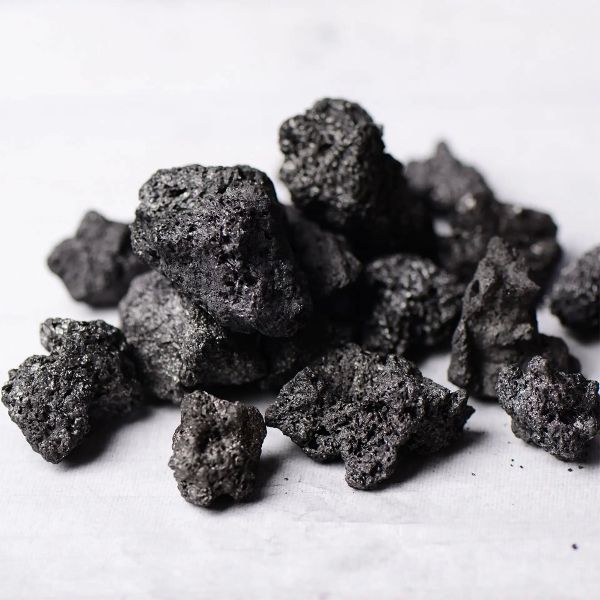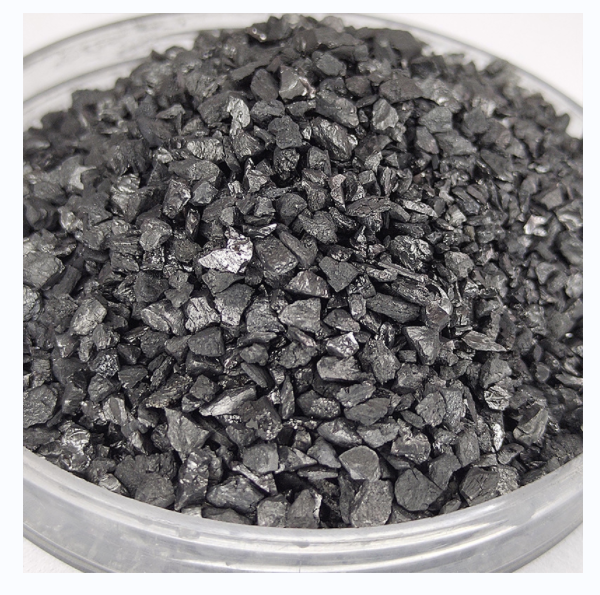Ultra High Power Graphite Electrodes: The Key to Increased Steel Production
With the popularity of scrap in casting production, more and more carburizing agents are used in cast iron production. However, many casting friends do not understand the application of different carburizing agents in different cast iron. Based on more than 10 years of experience in the first-line application guidance of casting customers, the technology department of Yunai summed up the factors affecting the absorption rate of casting carburizer for casting friends’ reference.
I. Composition of liquid iron
The melting point of carbon in the carburizer is very high (3 727℃), which is mainly dissolved in liquid iron through two ways of dissolution and diffusion. The solubility of carbon in liquid iron is: Cmax=1.3+0.25T-0.3Si-0.33P-0.45S+0.028Mn, where T is the temperature of liquid iron (℃).
1. Composition of liquid iron. It can be seen from the above equation that Si, S and P reduce the solubility of C and the absorption rate of the carburizer, while Mn is on the contrary. The data showed that the absorption rate of carburant decreased by 1~2 and 3~4 percentage points for every 0.1% increase of C and Si in liquid iron. The absorption rate can be increased by 2%~3% for every 1% Mn increase. Si has the greatest influence, followed by Mn, C and S. Therefore, in actual production, C should be added first and Si should be supplemented later.
2. Liquid iron temperature. The equilibrium temperature of liquid iron (C-Si-O) has great influence on the absorption rate. When the temperature of liquid iron is higher than the equilibrium temperature, C reacts with O preferentially, and the loss of C in liquid iron increases, and the absorption rate decreases. When the liquid iron temperature is less than the equilibrium temperature, the saturation of C decreases, the diffusion rate of C decreases, and the absorption rate decreases. When the liquid iron temperature is equal to the equilibrium temperature, the absorption rate is the highest. The equilibrium temperature of liquid iron (C-Si-O) varies with the difference of C and Si. In the actual production, the carburant of Yu Na brand is mostly dissolved and diffused in the liquid iron below the equilibrium temperature (1 150~1 370 ℃).
3. Stirring of liquid iron is conducive to the dissolution and diffusion of C, and reduces the probability of burning of carburizing agent floating on the surface of liquid iron. Before the carburizing agent is completely dissolved, the longer the stirring time, the higher the absorption rate, but stirring has a great impact on the lining life, but also aggravate the loss of C in liquid iron. The appropriate stirring time should be as short as possible after ensuring that the carburizer is completely dissolved.
4. Slag scraping if it is necessary to add carburizing agent after the liquefaction of iron, the furnace scum must be cleaned as far as possible to prevent carburizing agent wrapped into the slag.
Two, carburizing agent
1. Graphitized microstructure of Yunai brand carburizer.
The study shows that the structure of carbon is amorphous and disordered superimposed between amorphous and graphite. Under normal circumstances, when the temperature reaches 2500℃ and maintains a certain time, can basically complete the graphitization. Carbon at high temperature or in the process of secondary heating, it is not stone
The degree of graphite carbon transformation into graphitic carbon is called the degree of carbon graphitization, which is also one of the test items of carbon microanalysis. Based on the graphite crystal structure theory, it can be seen that the graphite structure is a layer plane composed of hexagonal carbon atom plane network, and the layers are connected with each other by van der Waals force, thus forming a lattice crystal structure extending indefinitely in the three-dimensional direction. X-ray diffraction is used to measure the proportion of regular hexagonal crystal shape after graphitization to test the degree of graphitization.
Graphitization degree is an important index of carburizing agent. The high degree of graphitization can not only increase the rate of carbon absorption, but also improve the nucleation ability of liquid iron due to the homoheteronuclear effect of its structure with liquid iron graphite. The biggest difference between graphitized carburizing agent and non-graphitized carburizing agent is that graphitized carburizing agent has carburizing effect and certain inoculation effect.
2. According to the mechanical properties and product characteristics of various castings, we provide special carburizing agent for all kinds of castings by controlling carbon and various trace element indexes.
Fixed carbon and ash fixed carbon are the effective components of carburizing agent, the higher the better; Ash is some metal or non-metallic oxide, is an impurity, should be as little as possible. The amount of fixed carbon and ash in carburizing agent are two important parameters of this and that, the high content of fixed carbon in carburizing agent, carburizing efficiency is also high. The carburizer with high ash content is easy to “coke” and form a slag layer, which isolates the carbon particles and makes them insoluble, thus reducing the carbon absorption rate. The high ash content also causes the amount of liquid iron slag, increases the power consumption, and increases the workload in the smelting process. The control of trace elements such as sulfur and nitrogen also maximizes the control of casting defect rate.
3. Selection of granularity of carburizing agent.
The particle size of the carburizer is small and the interface area of the liquid iron contact is large, the absorption rate will be high, but the fine particles are easy to be oxidized, but also easy to be taken away by the convection air or dust flow; The maximum particle size should be fully soluble in liquid iron during operation time. If the carburizing agent is added with the charge, the particle size can be larger, it is recommended to be in 0.2~ 9.5mm; If it is added in liquid iron or before drawing iron as a fine adjustment, the particle size can be 0.60~ 4.75mm; If carburizing in the package and used as pretreatment, the particle size is 0.20~ 0.85mm; Particles less than 0.2mm should not be used. The particle size is also related to the diameter of the furnace, the furnace diameter is large, the particle size of the carburizer should be larger, and vice versa.
4. Control the super pass index of Yunai brand carburizer.
Yu Nai brand carburant has a super strong pass, the specific surface area of the carbon particle is large, there is a larger surface infiltration in liquid iron, accelerate the dissolution and diffusion, can improve the absorption rate of carburant.
Recent Posts

undefined




 Quote Now
Quote Now
